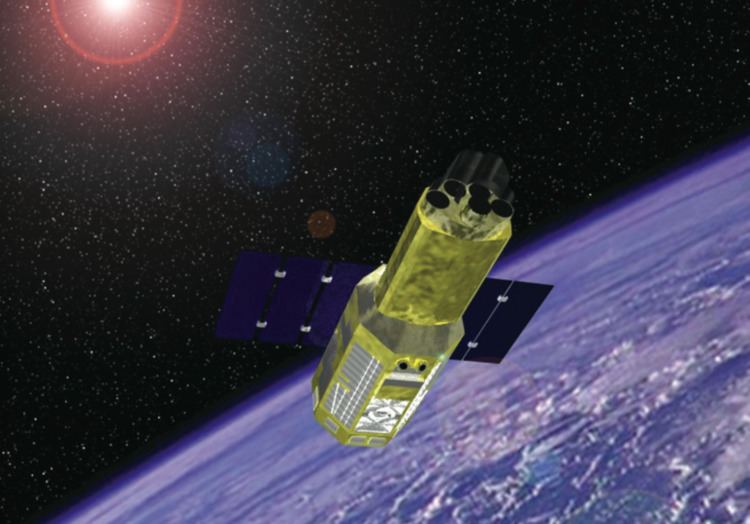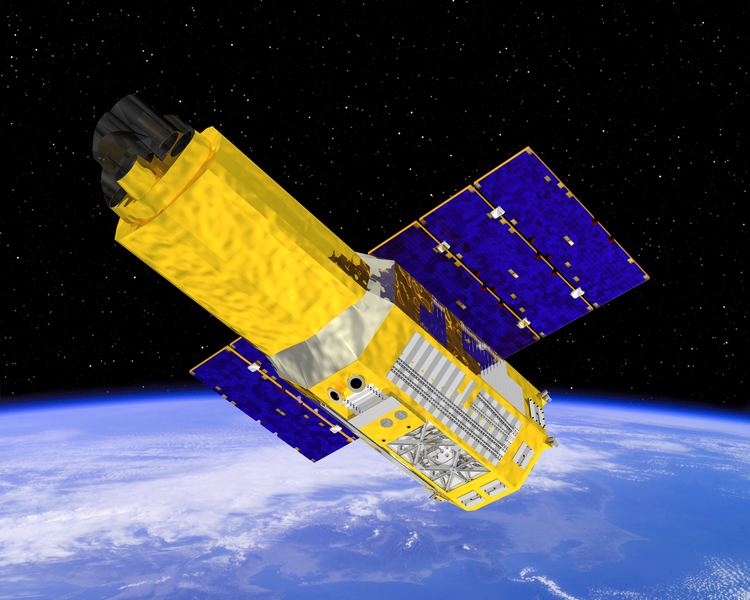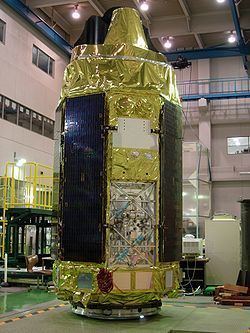COSPAR ID 2005-025A Launch date 10 July 2005 Inclination 31° | SATCAT no. 28773 Period 1.6 hours Inclination 31° | |
 | ||
Website www.jaxa.jp/projects/sat/astro_e2 Mission duration Planned: 2 yearsActual: 10 years, 1 month, 23 days Similar XMM‑Newton, Hitomi, Chandra X‑ray Observatory, Rossi X‑ray Timing Explorer, BeppoSAX | ||
Suzaku (formerly ASTRO-EII) was an X-ray astronomy satellite developed jointly by NASA's Goddard Space Flight Center and the Institute of Space and Aeronautical Science at JAXA to probe high energy X-ray sources, such as supernova explosions, black holes and galactic clusters. It was launched on 10 July 2005 aboard the M-V-6 rocket. After its successful launch, the satellite was renamed Suzaku after the mythical Vermilion bird of the South.
Contents

Just weeks after launch, on 29 July 2005 the first of a series of cooling system malfunctions occurred. These ultimately caused the entire reservoir of liquid helium to boil off into space by 8 August 2005. This effectively shut down the X-ray Spectrometer (XRS), which was the spacecraft's primary instrument. The two other instruments, the X-ray Imaging Spectrometer (XIS) and the Hard X-ray Detector (HXD), were unaffected by the malfunction. As a result, another XRS was integrated into the Hitomi X-ray satellite, launched in 2016.

On 26 August 2015, JAXA announced that communications with Suzaku had been intermittent since 1 June, and that the resumption of scientific operations would be difficult to accomplish given the spacecraft's condition. Mission operators decided to complete the mission imminently, as Suzaku had exceeded its design lifespan by eight years at this point. The mission came to an end on 2 September 2015, when JAXA commanded the radio transmitters on Suzaku to switch themselves off.

Spacecraft instruments

Suzaku is carrying high spectroscopic resolution, very wide energy band instruments for detecting signals ranging from soft X-rays up to gamma-rays (0.3–600 keV). High resolution spectroscopy and wide-band are essential factors to physically investigate high energy astronomical phenomena, such as black holes and supernovae. One such feature, the broad iron K line, may be key to more direct imaging of black holes.

ASTRO-E
Suzaku was a replacement for ASTRO-E, which was lost in a launch failure. The M-V-4 carrier rocket launched on 10 February 2000 at 01:30:00 UTC but experienced a failure 42 seconds later, failing to achieve orbit and crashing with its payload into the ocean.
Results
Suzaku discovered "fossil" light from a supernova remnant.
